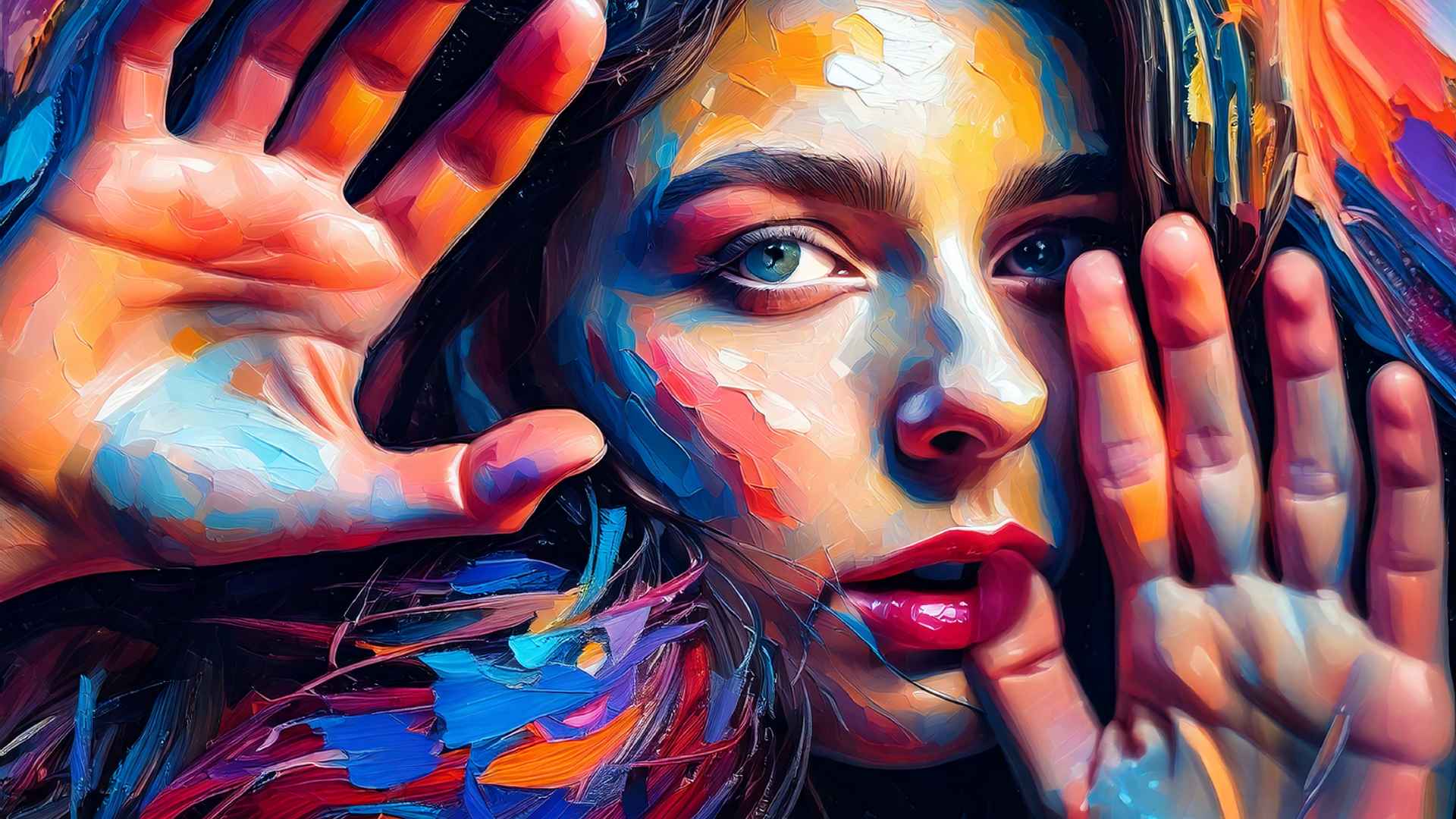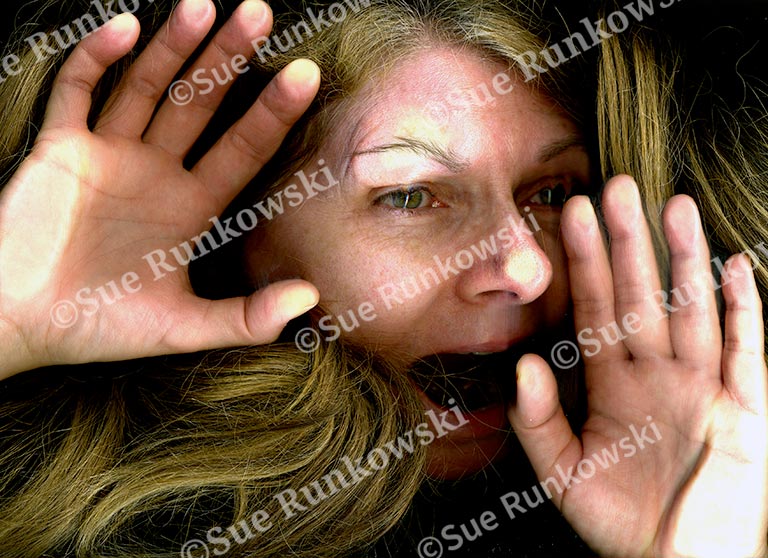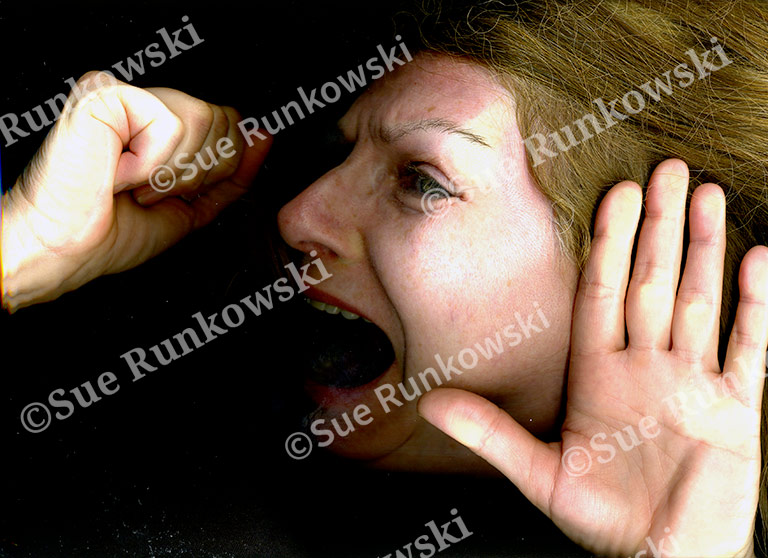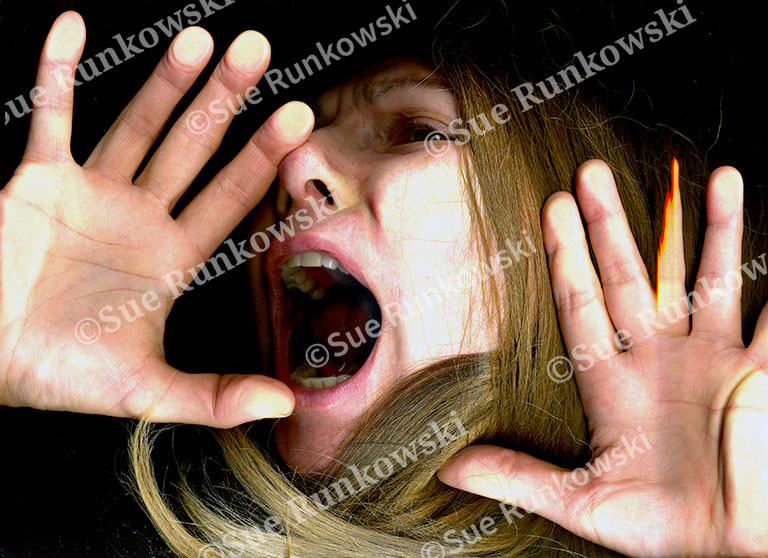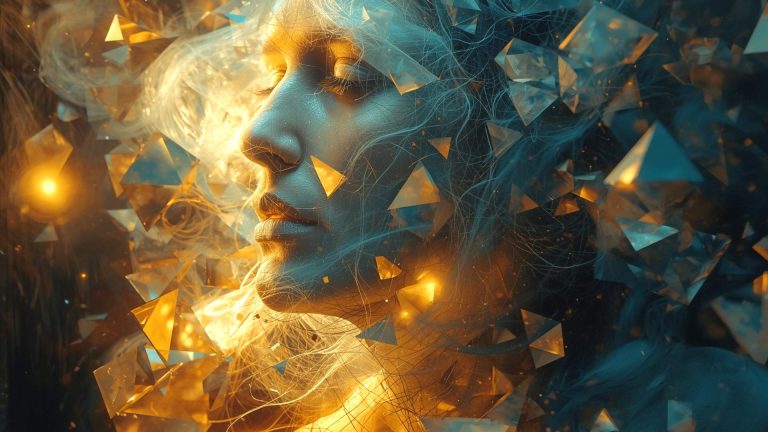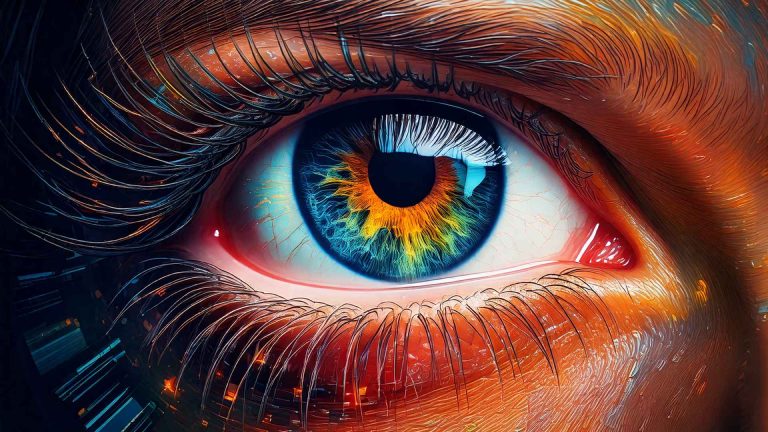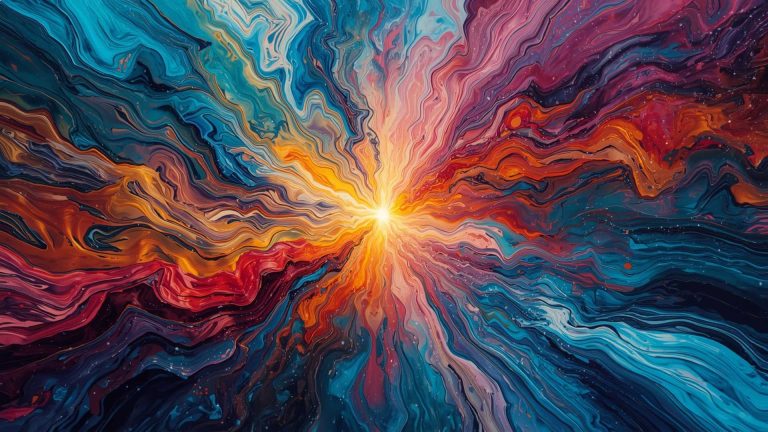Creating angst art in the space between dimensions
Read time 2 minutes 30 seconds
rief has a way that flattens the world. After the lose of my mother in a horrific car accident, the foundation of my world shattered, reality felt compressed into something unrecognizable—as if the three-dimensional world I knew had been violently pressed into a single, suffocating plane. Everything around me became strangely muted and surreal, as though reality had been flattened—stripped of its former warmth, depth, and meaning. The grief was immense, visceral, and for a long time, unspeakable.
In the months that followed, I couldn’t bring myself to paint or draw. Traditional forms of expression felt inadequate, too distant from the rawness of my experience. But then I turned to an unexpected tool: a flatbed digital scanner. It was quiet, accessible, and brutally honest. Unlike a camera, it didn’t frame or interpret—it simply recorded whatever was pressed against it, without judgment or embellishment.
I began scanning parts of myself—my face, hands, and hair—pressed tightly against the cold glass of the flatbed scanner. The images were ghostlike, distorted by pressure, and blurred by even the slightest motion. My skin flattened unnaturally, my fingers stretched and warped, as if I were trying to break through the glass, to reach something just out of grasp. In those moments, the scanner became more than a tool; it became a metaphor for grief itself—a transparent wall between the living and the lost.
Each scan captured a suspended moment of emotional intensity, a physical manifestation of what I couldn’t articulate. The blur of movement symbolized the restlessness of mourning, the way grief resists stillness. The pressure—visible in the compressed lines of my features—spoke to the weight of what I carried internally. My gestures against the glass felt like a desperate attempt to reconnect, to reach across dimensions, to touch the intangible absence that surrounded me.
The scanner’s flat surface became a metaphor for grief itself: a space where time collapses and depth disappears. The images were stark, ghostly, and possessed an otherworldly quality, often unsettling—fingers pressed white, objects suspended in digital limbo. They reflected not just the pain of lose, but the emotional compression I felt living with that loss. No perspective. No distance. Just overwhelmed by the closeness of absence.
These images were not portraits in the traditional sense—they were fragments, distortions, echoes. They revealed not who I was, but how I felt: flattened by loss, the search for shape in the void, and caught in the liminal space between memory and material. They existed in an impossible dimensional space—not quite two-dimensional, not quite three, suspended between dimensions, caught in the scanner light that moved like grief itself—slowly, methodically, and transformed everything it touched.
What began as a creative process unexpectedly became a form of recovery. The angst that once overwhelmed and felt destructive began to take on new shape—it became something generative. Each scan became a quiet ritual of remembrance, a way to remain tethered to her presence while slowly working through the trauma. While the project didn’t erase the grief, it gave it structure—a visual language for the indescribable experience of dimensional loss, an experience too complex for words. The resultant series isn’t solely about mourning; it’s about transformation: the alchemy of turning silence into image, pain into process, and memory into something real that endures.
Grief flattens us. It removes the layers of distraction and exposes us to what’s real, what hurts, what matters. Through this project, I found a way to honor that reality. To sit with it. To see it. And to say—without words—that love doesn’t end, it only changes dimensions.
